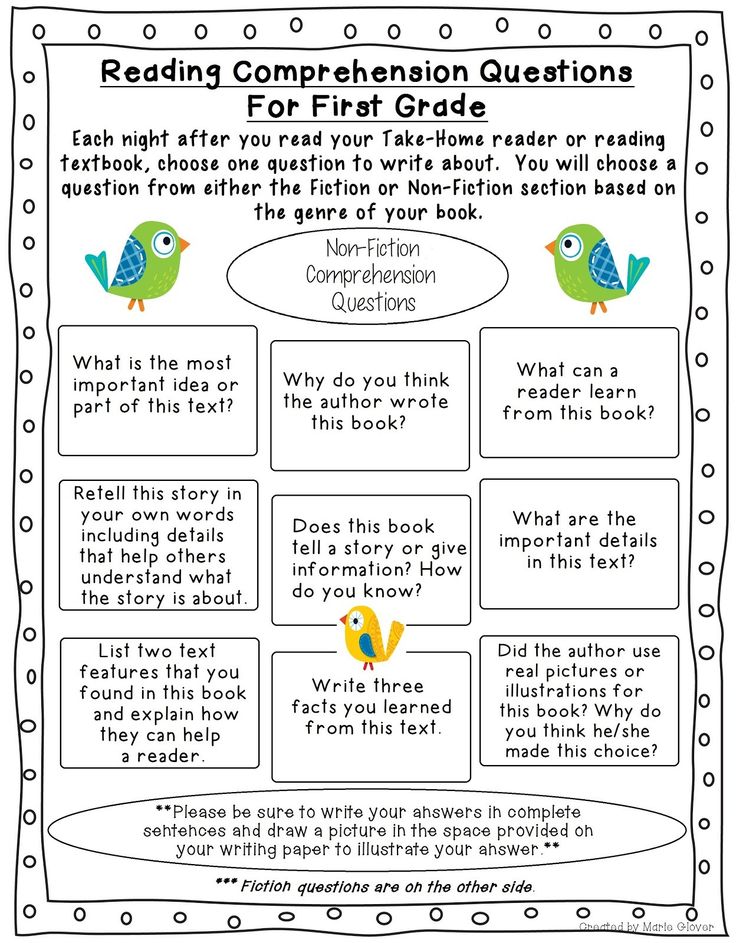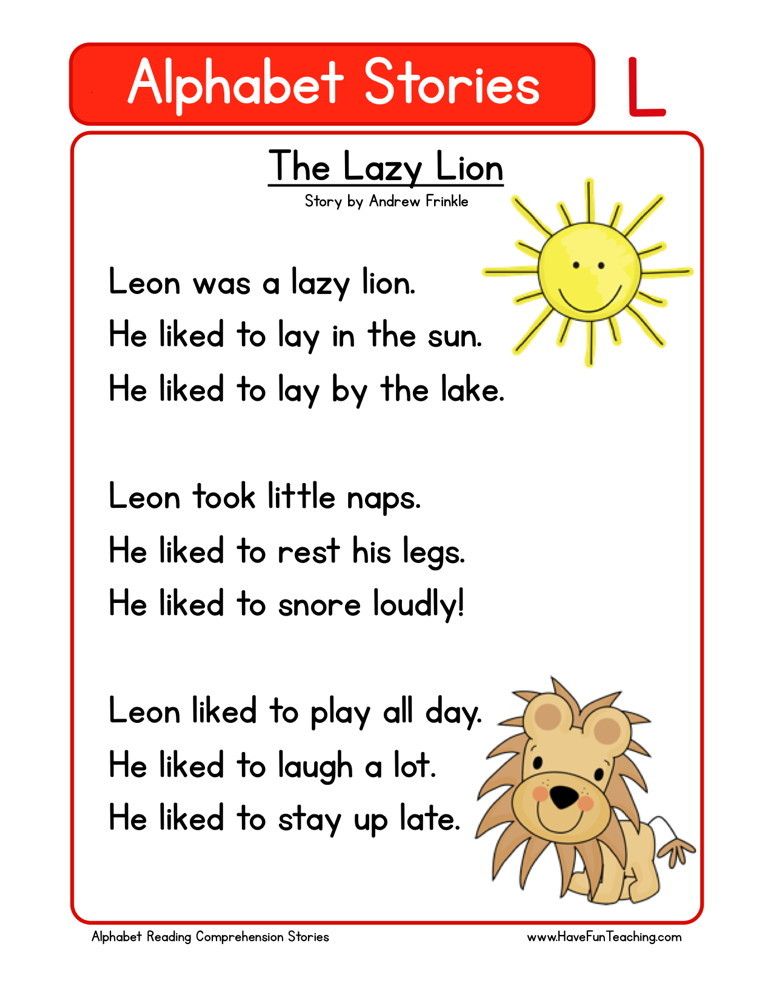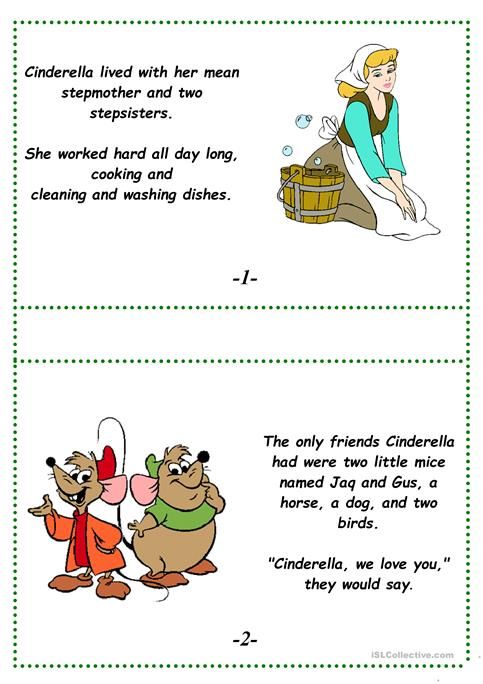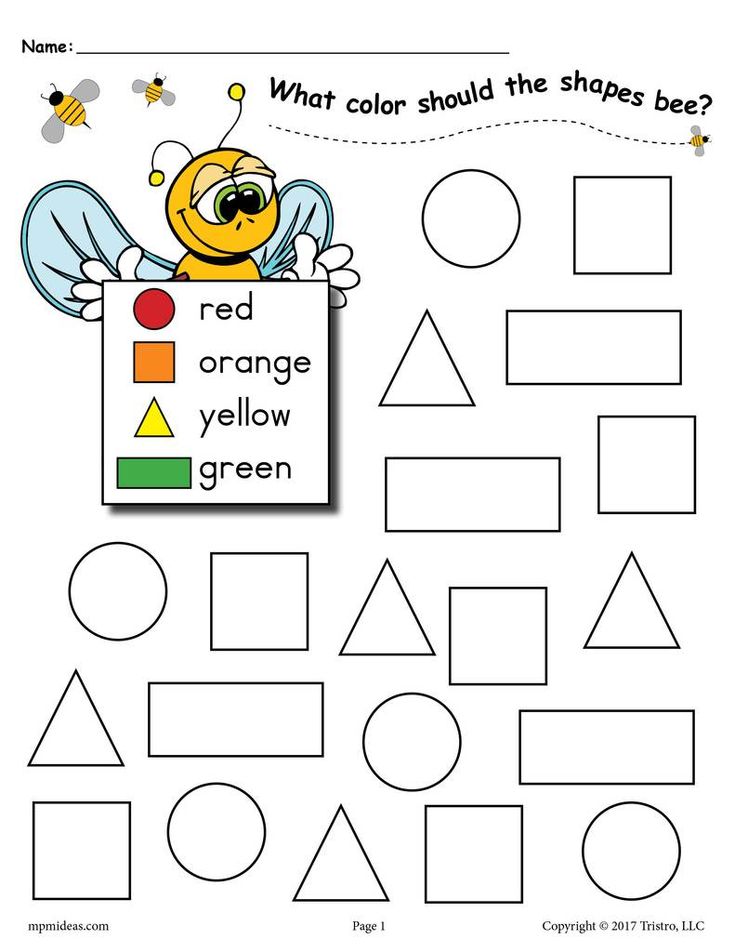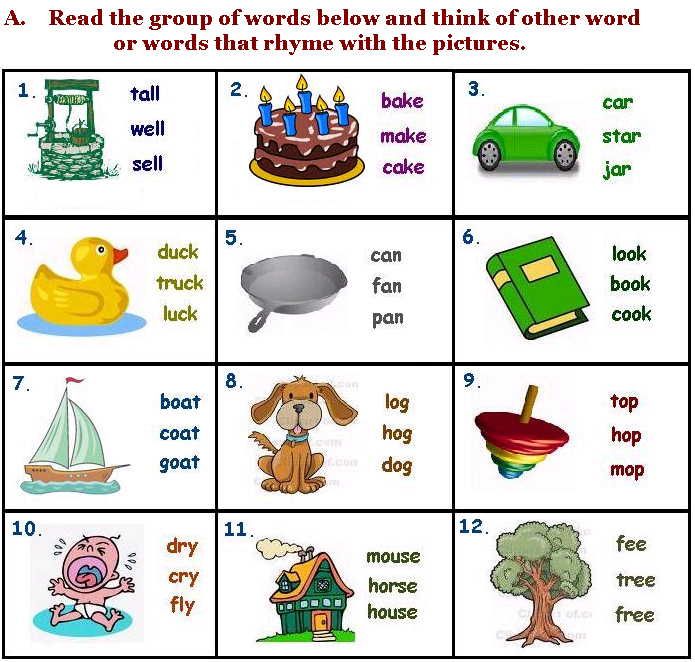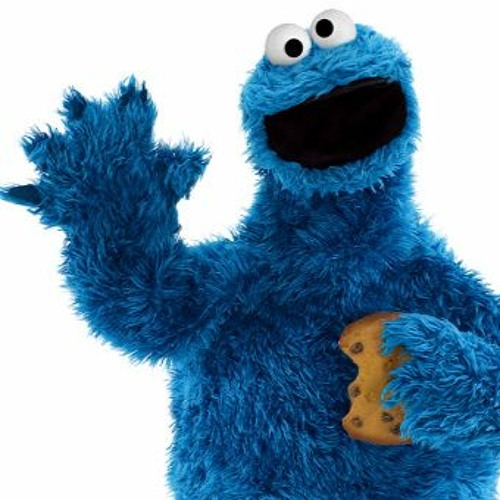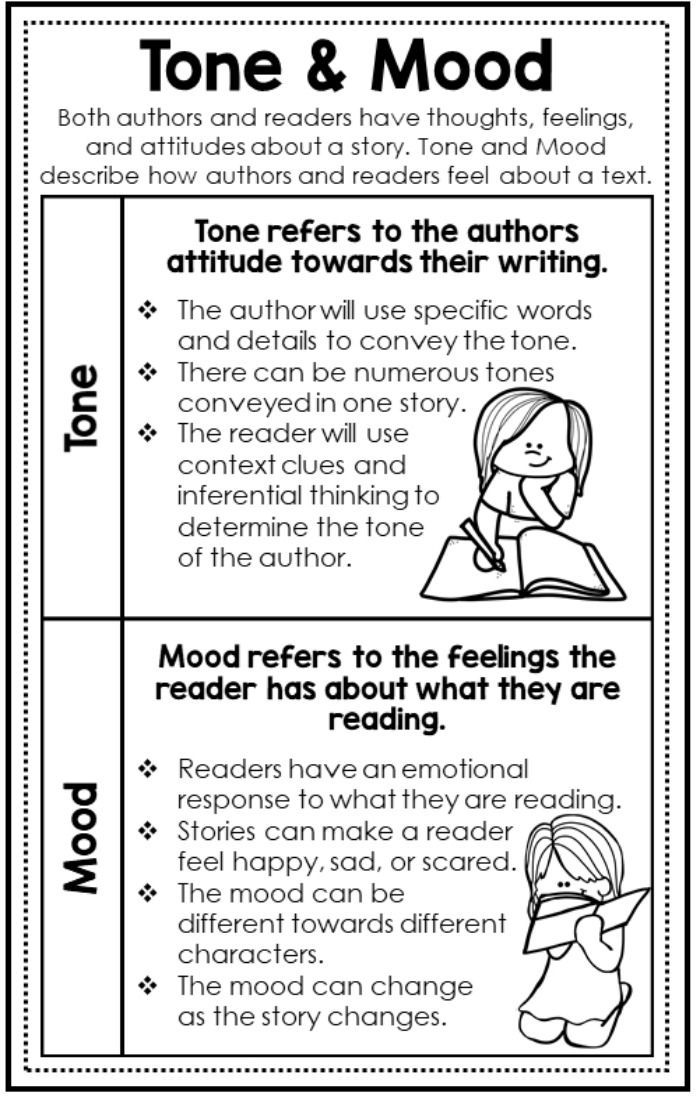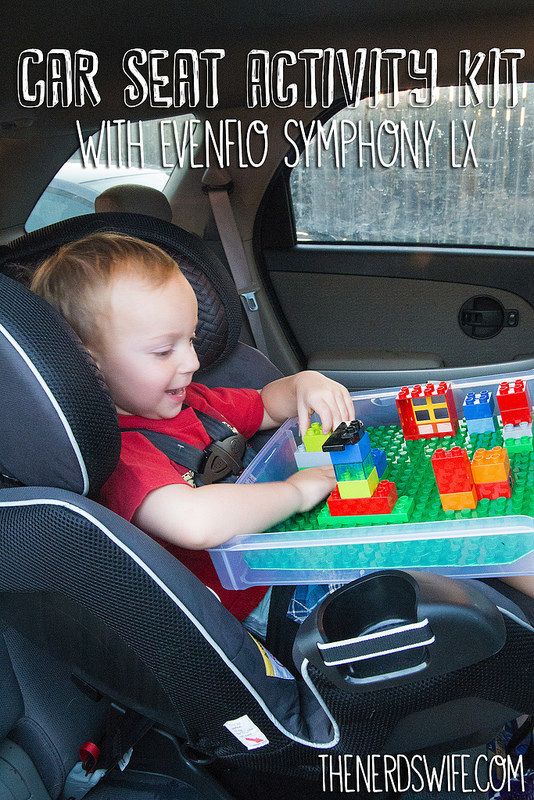First grade reading help
Reading Tips for Parents of First Graders
By: Reading Rockets
Give your child lots of opportunities to read aloud. Inspire your young reader to practice every day! The tips below offer some fun ways you can help your child become a happy and confident reader. Try a new tip each week. See what works best for your child.
These tips for parents of first graders are also available to download and print:
Don’t leave home without it
Bring along a book or magazine any time your child has to wait, such as at a doctor's office. Always try to fit in reading!
Once is not enough
Encourage your child to re-read favorite books and poems. Re-reading helps kids read more quickly and accurately.
Dig deeper into the story
Ask your child questions about the story you've just read. Say something like, "Why do you think Clifford did that?"
Take control of the television
It's difficult for reading to compete with TV and video games. Encourage reading as a free-time activity.
Be patient
When your child is trying to sound out an unfamiliar word, give him or her time to do so. Remind to child to look closely at the first letter or letters of the word.
Pick books that are at the right level
Help your child pick books that are not too difficult. The aim is to give your child lots of successful reading experiences.
Play word games
Have your child sound out the word as you change it from mat to fat to sat; from sat to sag to sap; and from sap to sip.
I read to you, you read to me
Take turns reading aloud at bedtime. Kids enjoy this special time with their parents.
Gently correct your young reader
When your child makes a mistake, gently point out the letters he or she overlooked or read incorrectly. Many beginning readers will guess wildly at a word based on its first letter.
Talk, talk, talk!
Talk with your child every day about school and things going on around the house.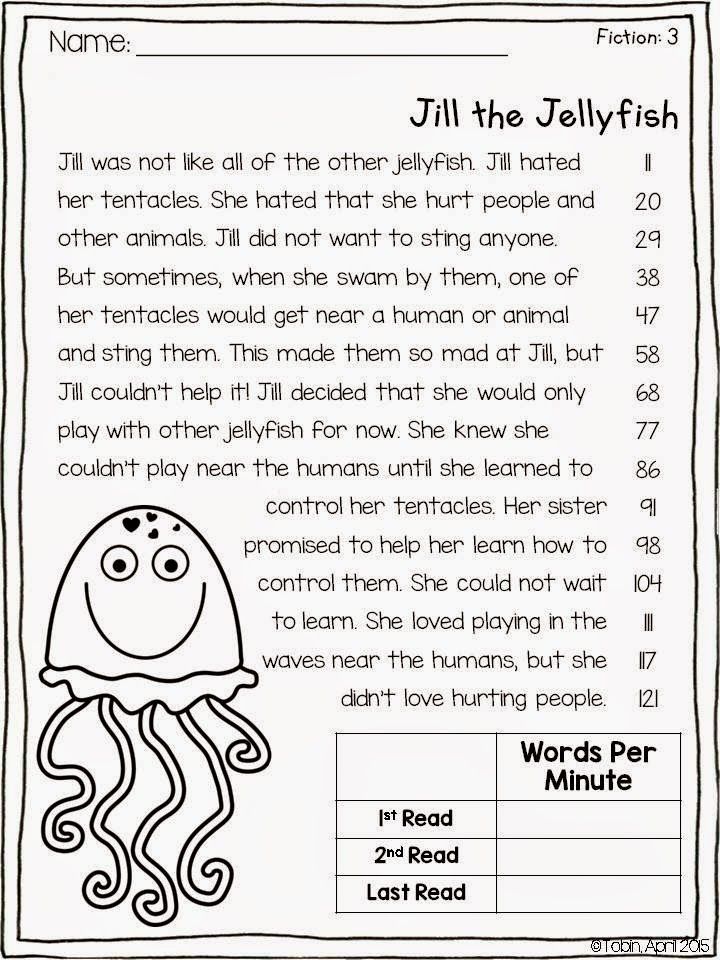 Sprinkle some interesting words into the conversation, and build on words you've talked about in the past.
Sprinkle some interesting words into the conversation, and build on words you've talked about in the past.
Write, write, write!
Ask your child to help you write out the grocery list, a thank you note to Grandma, or to keep a journal of special things that happen at home. When writing, encourage your child to use the letter and sound patterns he is learning at school.
Reading tips in other languages
A downloadable handout, for parents of babies, toddlers, and children in preschool to grade 3, is available in the following languages:
Reading tips for parents of…
Reading Rockets (2021)
Reprints
You are welcome to print copies or republish materials for non-commercial use as long as credit is given to Reading Rockets and the author(s). For commercial use, please contact [email protected]
Related Topics
Background Knowledge
Early Literacy Development
Fluency
Motivation
Oral Language
Phonological and Phonemic Awareness
Reading Aloud
Writing
New and Popular
Print-to-Speech and Speech-to-Print: Mapping Early Literacy
100 Children’s Authors and Illustrators Everyone Should Know
A New Model for Teaching High-Frequency Words
7 Great Ways to Encourage Your Child's Writing
Screening, Diagnosing, and Progress Monitoring for Fluency: The Details
Phonemic Activities for the Preschool or Elementary Classroom
Our Literacy Blogs
Shared Reading in the Structured Literacy Era
Kids and educational media
Meet Ali Kamanda and Jorge Redmond, authors of Black Boy, Black Boy: Celebrating the Power of You
Get Widget |
Subscribe
1st Grade Reading Activities For Struggling Readers
First grade is often where your child’s reading foundation is developed thoroughly.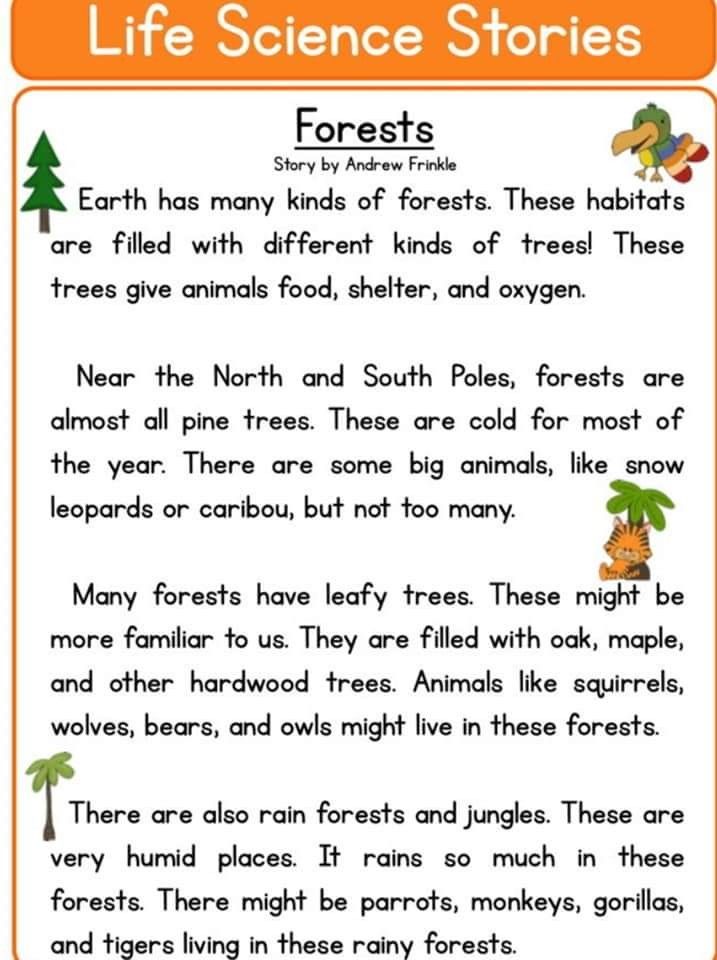 This is an essential grade for your child to establish their reading level and progress. However, sometimes children might struggle as they try to advance their reading skills. If you find that your child is struggling with reading, you can help them by trying these 1st grade reading activities for struggling readers.
This is an essential grade for your child to establish their reading level and progress. However, sometimes children might struggle as they try to advance their reading skills. If you find that your child is struggling with reading, you can help them by trying these 1st grade reading activities for struggling readers.
What reading skills should my 1st grader have?
Your first grader is definitely a full-fledged reader now! They already have many reading skills that they are continuing to improve and also acquiring new reading skills.
By the end of first grade, your child will have learned 150 sight words. They also should be familiar with many one syllable words and high-frequency words.
In first grade, they should be able to understand the basic structure and features of a sentence.
By now, they are also able to talk about what they have been reading and be able to answer content questions. Your child should also be able to understand the differences between fiction and non-fiction books and texts.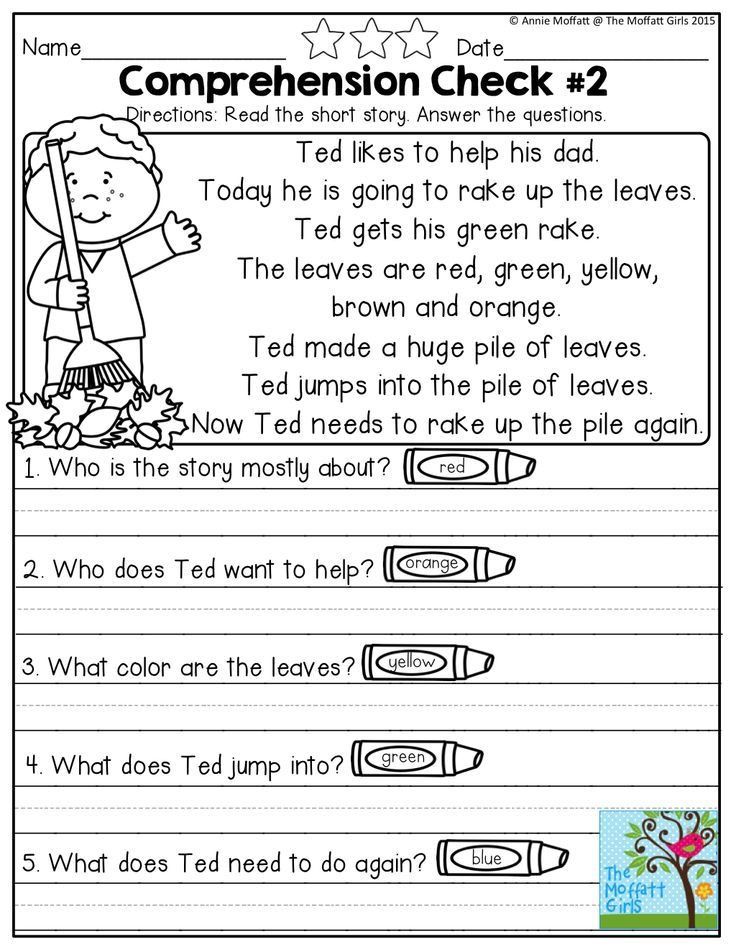
If you find that your child is struggling with any of these reading skills, they might need some more practice or intervention to help them get to their appropriate reading level.
How often should my 1st grader be reading?
When it comes to practicing their reading skills, first graders on average should be reading at least 10 minutes every day.
This might not seem like a lot of time but even just 10 minutes of reading time can help make a massive improvement in their reading skills. Make the 10 minutes a daily habit for your child like brushing their teeth.
Also, while 10 minutes is a good average number for all readers, struggling readers might be overwhelmed with anything more than that.
Some children might be hesitant or resist reading every day at first, but there are ways to make reading fun and an activity they look forward to doing.
How do you make reading fun for struggling readers?
Reading can be difficult for some first graders. It is important to be patient but also encouraging with your struggling reader. Here are some activities to make reading fun for them to get them to read every day:
It is important to be patient but also encouraging with your struggling reader. Here are some activities to make reading fun for them to get them to read every day:
- Read as a family – Reading as a family not only creates strong bonds, but it also helps to give your child a model for good reading habits. When they see you prioritize reading, they are more likely to value it and prioritize it as well.
You can schedule 10 minutes for everyone to read their own books together or you can choose a book as a family to read aloud.
- Read on TV – Using television as a reading tool might seem counterintuitive, but it is a great way to get your child to read without even knowing it!
When your child is watching television turn on the subtitles so that they can watch and read at the same time. This is a strategy commonly used with students learning a second language to practice both reading and listening skills.
- Visit a library – Get your child excited to read by going on a couple “reading field trips” such as going to a library.
 You can tour your local library and have your child pick out a few books to take home.
You can tour your local library and have your child pick out a few books to take home. - Visit a museum – Another great “reading field trip” option is to visit a museum. Museums often have a ton of great reading practice opportunities, and you can also prep your child before the visit by reading an article or story about the museum.
- Talk to an author – What better way to get your child about reading a book than by talking to the person that wrote it?
While you might not be able to talk to J.K. Rowling, many children’s books authors have meet ups at local bookstores or you can ask to talk to them virtually through Zoom.
Websites like Cameo also have some authors offering to record personalized videos, so you can have an author create a video just for your child!
- Create reading goals – Reading goals can help your child see the progress they are making and helps to keep them motivated. You can help them visualize and meet these goals by creating a reading goal chart or tracker and display it somewhere they will always see it.
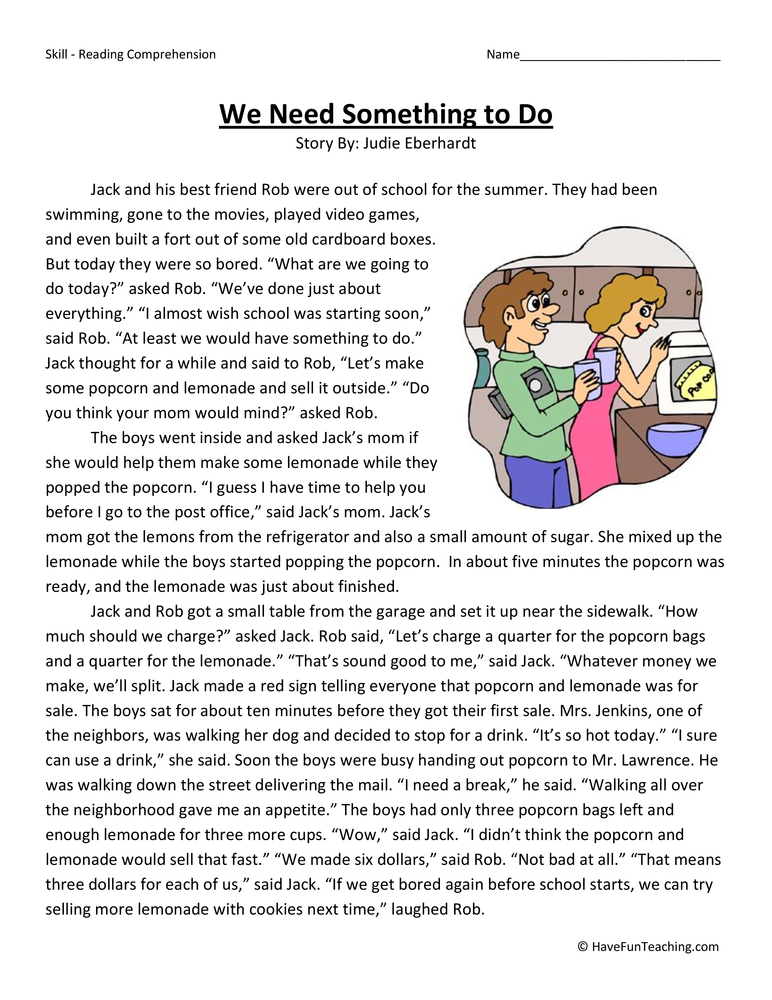
- Use a reading app – Technology is your greatest tool to help with your struggling readers. Try using reading apps such as Readability which acts like a private reading tutor for your child. They can get reading help whenever and wherever they need it!
- Get them to write – Reading and writing are closely related language skills. Often, good readers make good writers, and good writers make good readers.
You can encourage your child to practice their writing and reading skills by making comic books or short stories together then read them as their daily reading material.
First grade is a critical time for young readers to improve their reading skills and build new ones. Using activities and tools such as Readability can make reading fun and interactive for struggling or reluctant readers. Encouraging your child to read every day can help them to become a better reader and actually learn to enjoy reading.
texts to test reading technique - NAUMENOK
It is advisable to test the formation of reading skills 3 times a year: at the beginning of the academic year, at the end of the first half of the year and at the end of the academic year.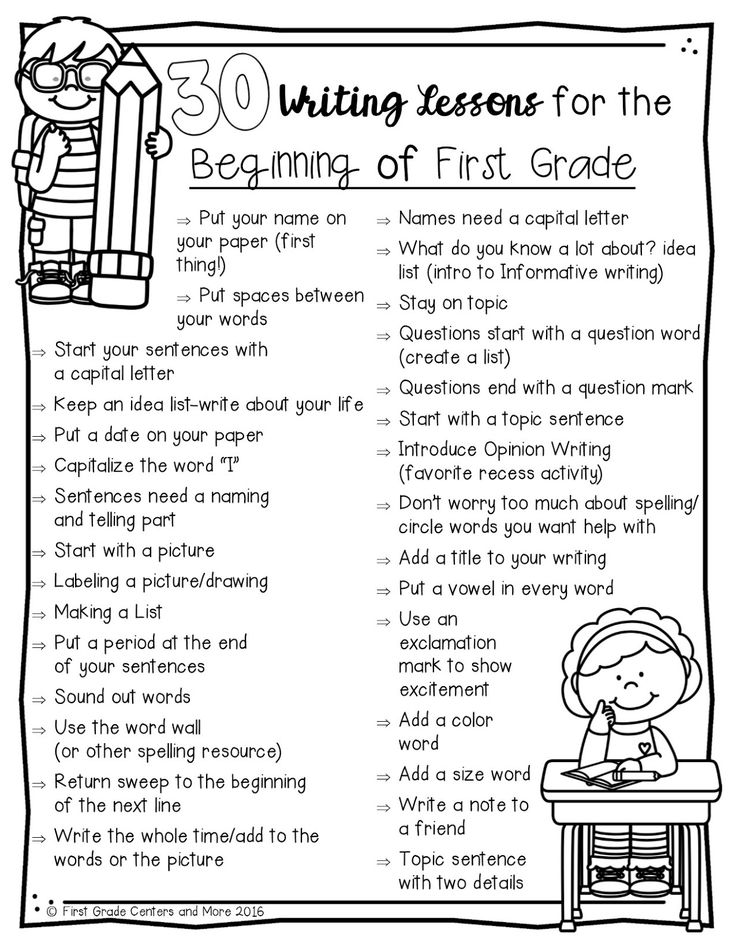 But sometimes the teacher prefers to check the reading technique at the end of each quarter.
But sometimes the teacher prefers to check the reading technique at the end of each quarter.
The reading technique test includes not only reading speed, but also reading accuracy, comprehension and expressiveness. I wrote about this in more detail in article 9.0005 "How to test a child's reading technique."
- Special texts are selected to test the reading technique.
- The text should be understandable to the child, but be unfamiliar to him.
- Sentences should be short, without any complicating constructions or signs.
- It is better if the text for checking reading is without illustrations and dialogues so that children do not get distracted while reading.
- Text must be placed on one page.
- While reading the text, you can not interrupt the child, correct mistakes. After completing the reading, you need to return to those words that caused difficulty or were read incorrectly and ask the child to read them again.
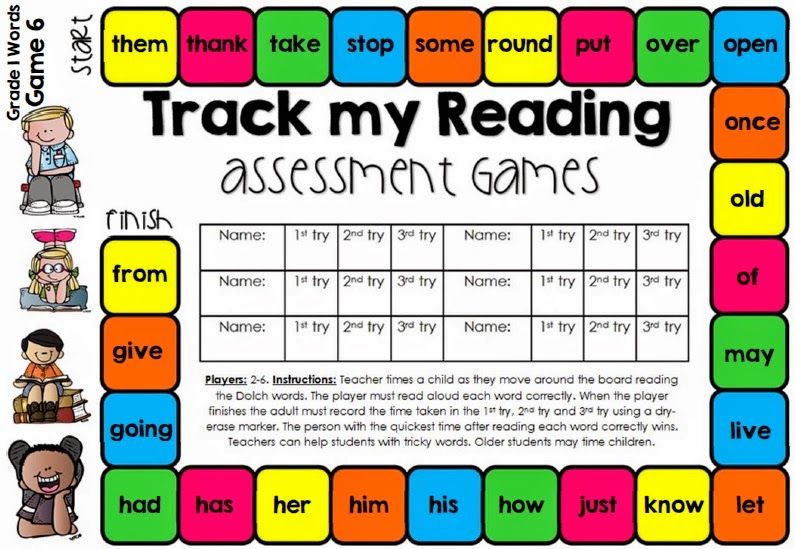 In the process of reading, a first grader can follow the text with his finger so as not to lose the line.
In the process of reading, a first grader can follow the text with his finger so as not to lose the line. - To test reading comprehension, you need to ask a few questions about the text.
Reading technique norm in grade 1
1st half year
Reading should be smooth syllabic, conscious and correct, with clear pronunciation of syllables and words.
Reading speed - 25-30 words per minute.
2nd half year
The child reads whole words correctly, consciously. Words with a complex syllabic structure are read syllable by syllable.
Reading speed - 30-40 words per minute.
These texts can be used not only to test the child's reading skills, but also for retelling. How to teach a child to retell can be found in the article “Teaching a child to retell”. nine0003
Reading technique test texts in grade 1
Sparrow and swallows
Swallow made a nest.
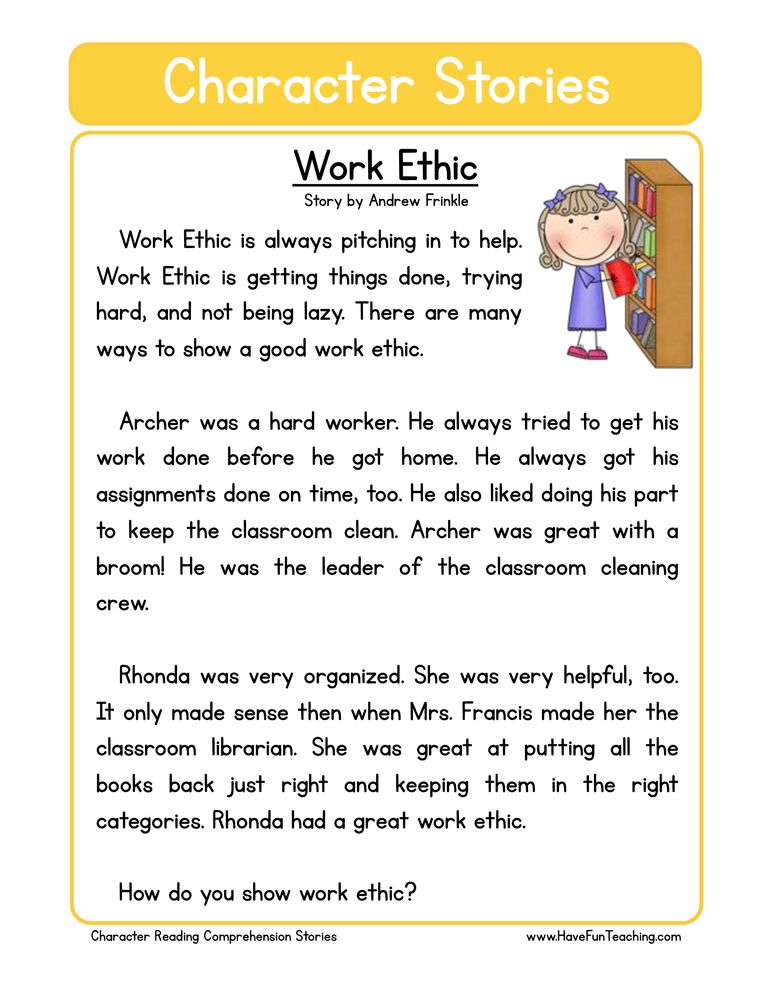 The sparrow saw the nest and occupied it. The swallow called her friends for help. Together, the swallows drove the sparrow out of the nest. (22 words)
The sparrow saw the nest and occupied it. The swallow called her friends for help. Together, the swallows drove the sparrow out of the nest. (22 words) Questions:
- What did the sparrow do?
- Who did the swallow call for help?
Ant
Ant found a big grain. He couldn't carry it alone. The ant called for help from his comrades. Together, the ants easily dragged the grain into the anthill. (22 words)
Questions:
- What did the ant find?
- Why did the ant call his friends for help?
Summer
Warm summer has come. Currants ripened in the garden. Masha and Tanya collect it in a bucket. Mom will make jam from it. In winter, in the cold, children will drink tea with jam. (29 words)
Questions:
- Which berry is ripe in the garden?
- What will mother do?
The fox and cancer
The fox suggested that the crayfish run a race.
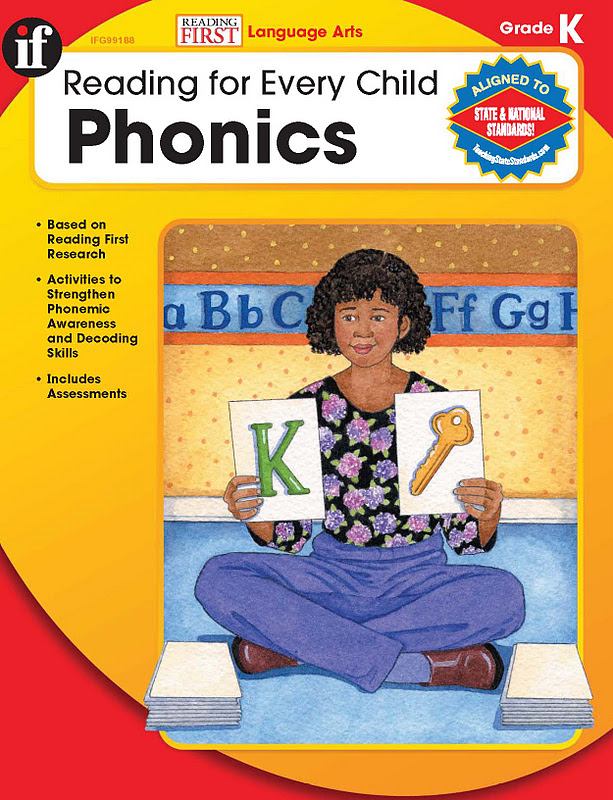 Cancer agreed. The fox ran, and the crayfish clung to the fox's tail. The fox ran to the place. The fox turned around, and the crayfish unhooked and said: "I've been waiting for you here for a long time." (32 words)
Cancer agreed. The fox ran, and the crayfish clung to the fox's tail. The fox ran to the place. The fox turned around, and the crayfish unhooked and said: "I've been waiting for you here for a long time." (32 words) Questions:
- What did the fox offer to cancer?
- How did cancer outsmart the fox?
Cranes
Cranes live near swamps, forest lakes, meadows, river banks. Nests are built right on the ground. The crane circles over the nest, guarding it. At the end of summer, cranes gather in flocks and fly to warm countries. (33 words)
Questions:
- Where do cranes build nests?
- When do cranes fly to warm countries?
Chicken
A little girl wound woolen threads around an egg. It turned out to be a ball. This ball she put on the stove in a basket. Three weeks have passed. Suddenly there was a squeak from the basket.
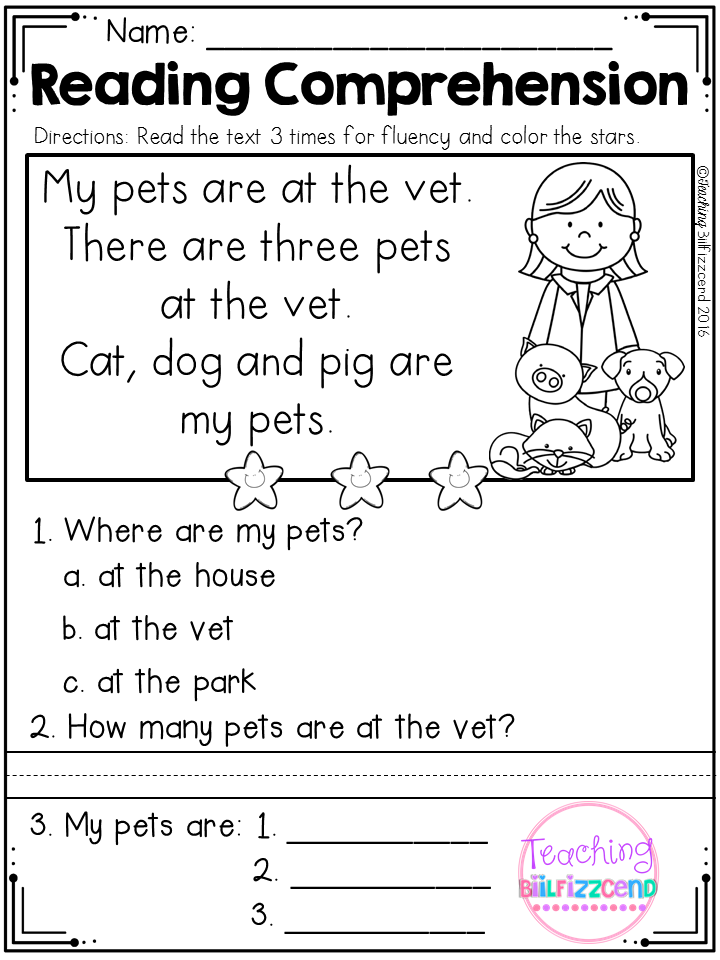 The ball squeaked. The girl unrolled the ball. There was a little chicken there. (34 words)
The ball squeaked. The girl unrolled the ball. There was a little chicken there. (34 words) Questions:
- How did the girl make the ball?
- What happened to the ball after three weeks?
Mushrooms
The guys went to the forest for mushrooms. Dima found a beautiful boletus under a birch. Tanya saw a small butter dish under a pine tree. Ilya saw a huge boletus in the grass. In the grove they collected full baskets of various mushrooms. The children returned home happy and happy. (38 words)
Questions:
- Who found the boletus?
- What mushroom grew under a pine tree? nine0010
- Where did the boletus hide?
Summer
Summer has come. In forest clearings, the grass is above the knees. Grasshoppers chirp. Strawberries turn red on the tubercles. Raspberries, lingonberries, wild roses, blueberries bloom.
 The chicks fly out of the nests. A little time will pass, and delicious wild berries will appear. Soon children will come here with baskets to pick berries. (39 words)
The chicks fly out of the nests. A little time will pass, and delicious wild berries will appear. Soon children will come here with baskets to pick berries. (39 words) Questions:
- What is the grass in the meadows?
- Which berries bloom? nine0010
Hedgehog
The guys were walking through the forest. We found a hedgehog under a bush. He curled up in fear. The guys rolled the hedgehog into a hat and brought it home. They gave him milk. The hedgehog turned around and began to eat milk. And then the hedgehog ran back to his forest. (39 words) (according to E. Charushin)
Questions:
- Who did the guys find?
- What did the hedgehog do with fear?
- What did the guys give the hedgehog?
Bathing the cubs
A big bear and two merry cubs came out of the forest. The bear grabbed one cub with her teeth by the collar and let's dip into the river.
 The other cub got scared and ran into the forest. His mother caught up with him, slapped him, and then into the water. The cubs were happy. (40 words) (according to V. Bianchi)
The other cub got scared and ran into the forest. His mother caught up with him, slapped him, and then into the water. The cubs were happy. (40 words) (according to V. Bianchi) Questions:
- Who came out of the forest?
- What did the second bear do?
- Were the cubs satisfied with the bath?
Lynx
In a dark forest, near a forest path, a beast lay down. This is a lynx - a cat the size of a large dog. Her tail is short, her ears are tufted, her skin is spotted. The lynx lies on a thick bough and waits. She will rush from the tree to her prey. (40 words)
Questions:
- What is the tail of a lynx?
- Where did the lynx hide?
Spring
The sun warmed the earth. Ran the streams. The rooks have arrived. Birds hatch chicks. A hare jumps merrily through the forest. The fox went hunting and smells the prey.
 The she-wolf led the cubs into the clearing. The bear growls at the lair. Butterflies and bees fly over the flowers. Everyone is excited about spring. (41 words)
The she-wolf led the cubs into the clearing. The bear growls at the lair. Butterflies and bees fly over the flowers. Everyone is excited about spring. (41 words) Questions:
- What does the hare do?
- Where did the she-wolf lead the cubs?
- Where do butterflies and bees fly?
Woodpecker
What does the woodpecker do in the forest? He lives and works in the forest. A bird with a red cap on its head sits on a tall pine and knocks on the trunk with a strong beak. Why is he doing this? Woodpecker saves trees from harmful insects. Therefore, he is often called the forest doctor. (43 words)
Questions:
- What does a woodpecker have on his head?
- Why is a woodpecker called a forest doctor?
Meeting
Misha is walking along the alley of the old park. Suddenly, a small red animal runs out onto the path right at his feet.
 Squirrel! The squirrel has a fluffy tail. She looks with intelligent eyes. The squirrel is waiting for a treat. Misha hands her a nut. The animal is happy. And now her fluffy tail flashed on the tree. (44 words)
Squirrel! The squirrel has a fluffy tail. She looks with intelligent eyes. The squirrel is waiting for a treat. Misha hands her a nut. The animal is happy. And now her fluffy tail flashed on the tree. (44 words) Questions:
- Who was walking in the park?
- Who did Misha meet?
- What did the boy treat the squirrel to?
Brave men
The boys went to school. Suddenly a dog jumped out. She barked at the guys. The boys started to run. Only Borya remained standing still. The dog stopped barking and approached Borya. Borya stroked her. Then Borya calmly went to school, and the dog quietly followed him. (44 words)
Questions:
- Where were the guys going?
- What happened on the way?
- How did the boys behave?
- What did Borya do?
Sly fish
For a long time I sat with a fishing rod on the shore.
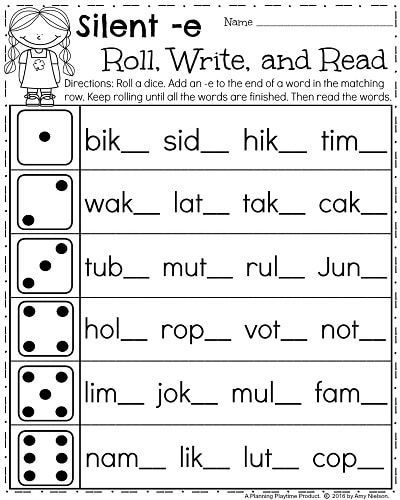 Minnows do not peck at me. And grandfather is sitting under a bush and has already caught a bucket. I sat down in the shade. Immediately the minnows began to peck. It turns out that in a clean place the shadow of the fishing rod is visible. So the cunning fish did not go to the hook. (48 words) (According to E. Shim)
Minnows do not peck at me. And grandfather is sitting under a bush and has already caught a bucket. I sat down in the shade. Immediately the minnows began to peck. It turns out that in a clean place the shadow of the fishing rod is visible. So the cunning fish did not go to the hook. (48 words) (According to E. Shim) Questions :
- Where did grandfather fish?
- Why was he fishing?
- Why didn't the boy bite the fish at first?
Cockerel
A cockerel walks around the yard: a red comb on its head, a red beard under its nose. Petya's tail is a wheel, there are patterns on the tail, spurs on the legs. Petya found a grain. He calls a hen with chickens. They did not share the grain - they fought. Petya the cockerel reconciled them: he ate the grain himself, waved his wings, shouted at the top of his voice: “Ku-ka-re-ku!” (49words)
Questions:
- Where does the cockerel go?
- What did the cockerel find?
- Whom did he call?
- Why did the chickens fight?
Bats
Bats are very useful animals.
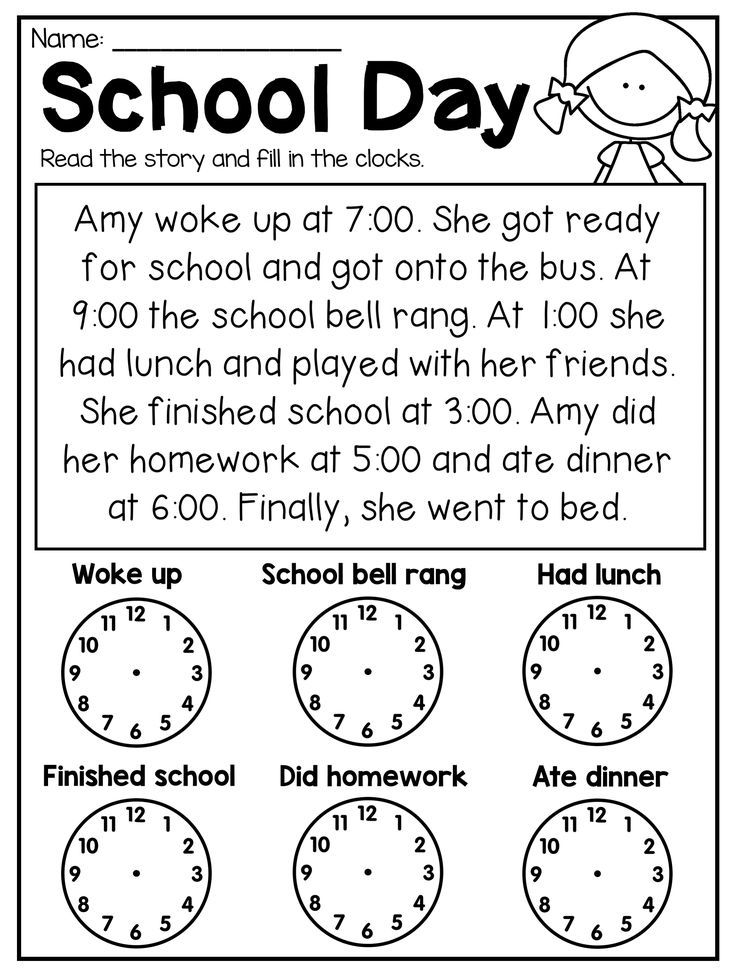 They eat harmful insects. During the day, bats wrap their wide wings like cloaks and hang upside down in dark places. The night is coming. They fly out to hunt. Many harmful insects fly at night. Almost all birds sleep at this time. Therefore, the "work" of bats is especially important. nine0006 (51 words) (According to Yu. Dmitriev)
They eat harmful insects. During the day, bats wrap their wide wings like cloaks and hang upside down in dark places. The night is coming. They fly out to hunt. Many harmful insects fly at night. Almost all birds sleep at this time. Therefore, the "work" of bats is especially important. nine0006 (51 words) (According to Yu. Dmitriev) Questions:
- What are the benefits of bats?
- How do bats sleep?
- When do bats hunt?
Ducks
Vasya is sitting on the bank. He watches how the ducks swim in the pond: they hide their wide spouts in the water. Vasya does not know how to drive the ducks home. Vasya began to call the ducks: “Ooty-ooty-ducks! The noses are wide, the paws are webbed! Stop dragging worms, pinching grass - it's time for you to go home. Ducks Vasya obeyed, went ashore, go home. (52 words) (according to K. Ushinsky)
Questions:
- What did Vasya do on the beach?
- What kind of nose do ducks have?
- What did Vasya call the ducks?
- What did the ducks do?
Winter
Frost bound the earth.
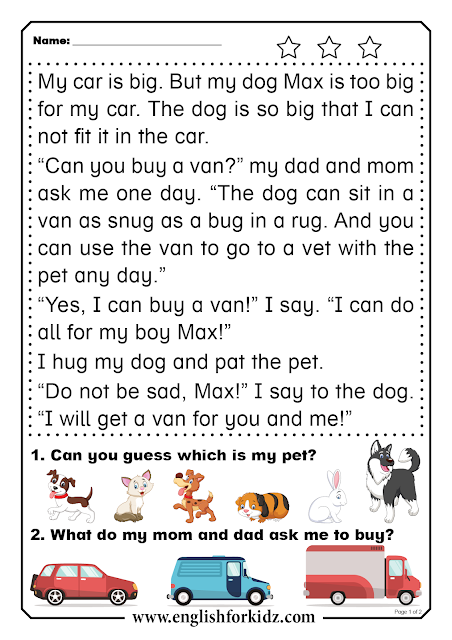 Rivers and lakes are frozen. Everywhere lies white fluffy snow. Children are happy with winter. It's nice to ski on fresh snow. Matvey and Lera are playing snowballs. Andrei and Sasha are making a snowman. Only animals have a hard time in the winter cold. Birds fly closer to housing. Guys, help our little friends in winter. Make bird feeders! (55 words)
Rivers and lakes are frozen. Everywhere lies white fluffy snow. Children are happy with winter. It's nice to ski on fresh snow. Matvey and Lera are playing snowballs. Andrei and Sasha are making a snowman. Only animals have a hard time in the winter cold. Birds fly closer to housing. Guys, help our little friends in winter. Make bird feeders! (55 words) Questions:
- Who is happy about winter?
- Who has it hard in winter?
- How can you help the birds?
Four butterflies
It was spring. The sun shone brightly. Flowers grew in the meadow. Four butterflies were flying above them: a red butterfly, a white butterfly, a yellow butterfly, and a green butterfly. Suddenly, a large black bird flew in. She saw butterflies and wanted to eat them. The butterflies got scared and sat on the flowers. A white butterfly sat on a chamomile. Red butterfly - on poppy. Yellow - on a dandelion, and green hid behind a leaf of a tree.
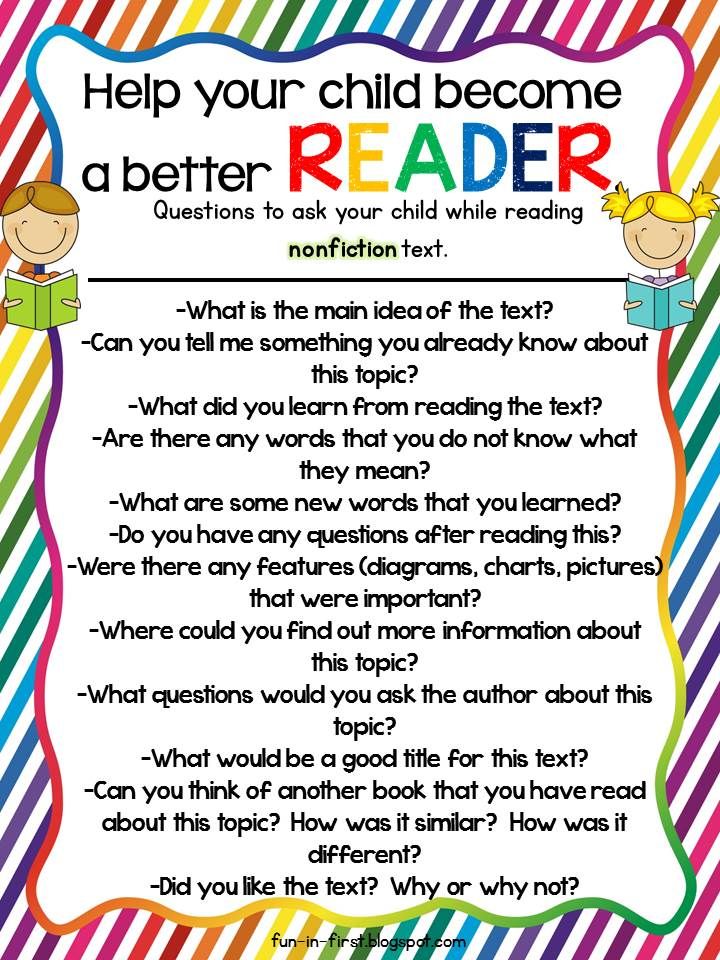 A bird flew, flew, but did not see butterflies. (56 words)
A bird flew, flew, but did not see butterflies. (56 words) Questions:
- What butterflies were flying over the flowers?
- Why didn't the bird see butterflies?
If the child's reading technique is below the norm, then it is necessary to read a lot (which is very difficult with poor reading quality) and does not always bring results. It is better to use special techniques and exercises, because. The reasons for bad reading can be different.
Slow readers and children who are struggling to improve their reading speed can be helped by using syllabary reading or, much more effectively, by using an integrated approach that includes various professional techniques. nine0003
To do this, I suggest you use the books:
THE BIG BOOK OF SYLLING TABLES is
- a ready-made tool for training reading and speed reading skills;
- 200 syllabic tables of different levels of complexity;
- professional spreadsheet technique.

The most effective methods will allow each table to be used repeatedly several times, increasing the child's interest in reading. nine0003
By working with these syllable tables the child will receive:
- improved reading skills;
- increased reading speed;
- improved diction;
- reading comprehension;
- development of thinking and attention;
- vocabulary expansion;
- increased self-confidence.
The child will stop stumbling over difficult words while reading. The reading process will become natural and painless. nine0003
You can easily print the pages you need. All pages of the book can be used separately.
THE BIG BOOK OF SAYLING CHARTS is suitable for those who are just taking their first steps in reading, and for those who want to significantly improve the quality of reading.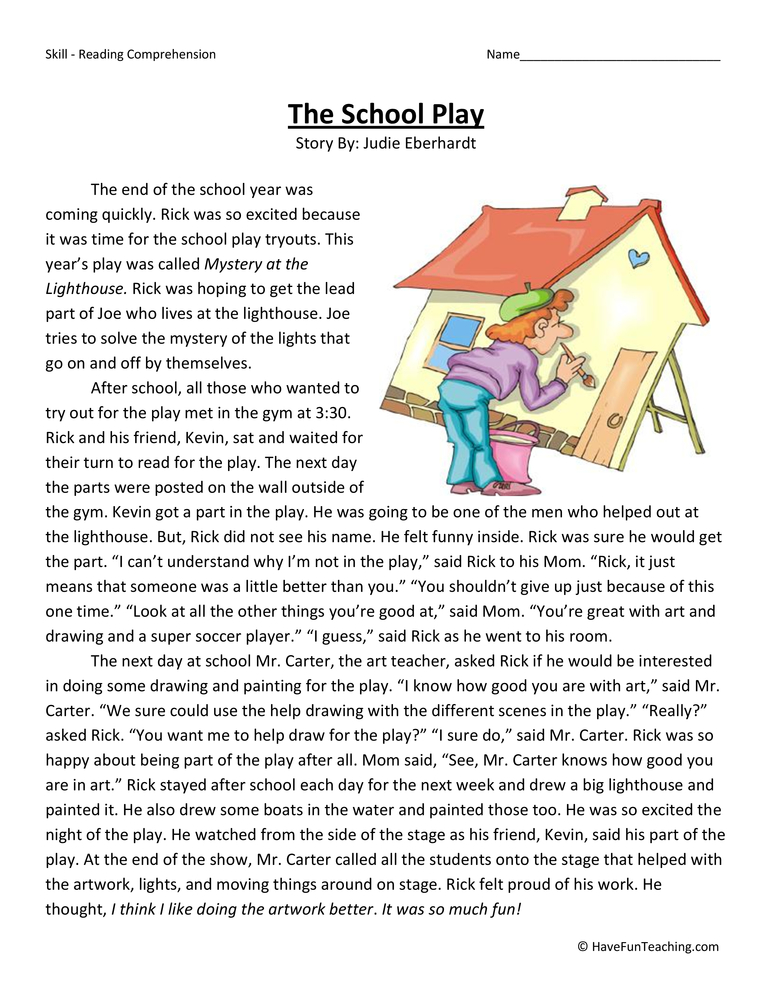
Syllabary charts help children develop speed reading skills. But it often happens that a child gets stuck at a reading speed of 10-20 words per minute. It is important to track this moment in time and start immediately performing the necessary exercises. nine0003
I have created a training that will help you overcome this barrier without much difficulty. It is convenient to use both at home and when working with the whole class. A variety of tasks will not let children get bored, and parents and teachers will not have to select the necessary material for a long time and torment children with an exhausting, incredibly difficult process at this stage - reading.
Download TRAINING "Speed Reading and Speech Development"
Together with the training you will receive a small book as a gift - 20 syllabic tables for practicing reading skills (they do not repeat the tables of a large book). nine0051
Reading texts grade 1 print with tasks
O.
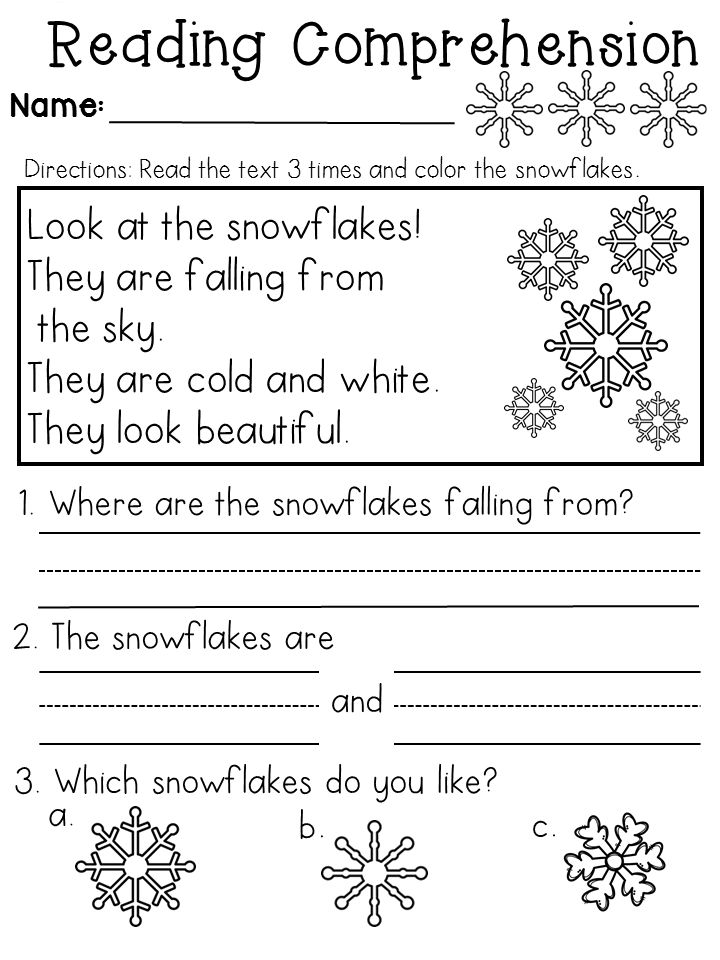 Naumova "Noisy texts for reading and retelling"
Naumova "Noisy texts for reading and retelling"
The skill of high-quality reading and writing depends on the state of visual perception and attention of the child.
The better the child recognizes visual images, the better he reads and writes more competently.
Working with noisy texts engages the child's brain as much as possible and greatly increases the productivity of classes. At the same time, there is a development of figurative thinking, attention, memory, the ability to understand what is read. nine0006
In the book you will find:
- Noisy texts with questions;
- Texts with questions for reading, retelling, checking reading technique;
- Method of working with noisy texts;
- High productivity options;
- Exercises for developing speech and reading comprehension.
As a result, the child:
- read speed increases;
- attention and memory develop;
- conscious reading skills are developed;
- develop self-control skills;
- speech develops;
- the number of writing errors decreases;
- the process of writing summaries and essays is facilitated;
- improvement of educational performance.
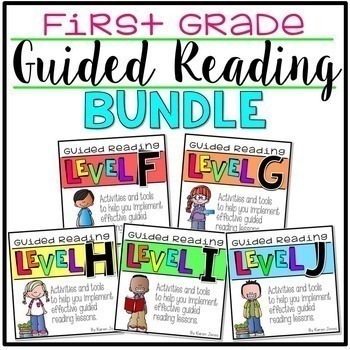
Suitable for individual and group lessons.
Easy to print and use.
The Noisy Texts book series consists of three parts.
Texts differ in the number of words, complexity and degree of noise.
It is desirable to work on all three levels of difficulty.
Level 1
Number of words in texts 25-55. A simple noisemaker. nine0003
Download
Level 2
Number of words in texts 35-75. Inclined skimmer.
Download
Level 3
Number of words in texts 45-95. Complicated noise.
Download
Also:
Come to
Bookshop for useful books!
Sincerely, Olga Naumova
Thank you for sharing this article on social networks! nine0006
Texts to test reading technique, Grade 1 | Reading card index (Grade 1):
READING TECHNIQUE, GRADE 1
The ability to read is one of the most important skills that contribute to the successful assimilation of knowledge. At the first stage of teaching reading technique, quite a lot of attention is paid. This is not surprising, because it is during this period that the pace of reading is formed.
At the first stage of teaching reading technique, quite a lot of attention is paid. This is not surprising, because it is during this period that the pace of reading is formed.
Reading technique is monitored especially carefully in Grade 1. During this period, reading is the object of assimilation. First graders are tested:
- whether the method of reading by syllables has been formed;
- to what extent there is an understanding of the general meaning of the read text;
- whether the child understands what individual words and sentences mean;
- whether there are pauses between sentences.
Reading requirements
Reading technique may not be checked in the first half of the first grade.
At the end of the second half of the year, the child should have formed a conscious, correct reading. Simple words are read as a whole word. Syllabic reading of polysyllabic words is allowed. nine0003
Norms of reading technique in the first grade
According to the indicative indicators of the Federal State Educational Standard, the reading speed in the 1st grade should be:
- in the 1st half of the year - 25-30 words per minute;
- in the 2nd half of the year - 30-40 words per minute.
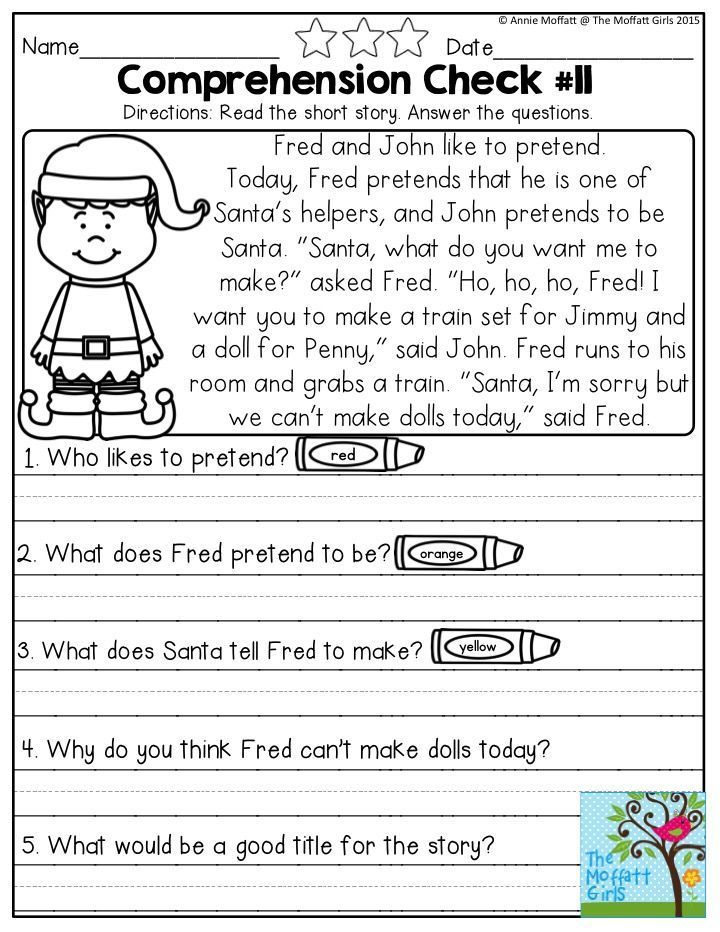
Features of the test
In the 1st grade, no grades are given for learning, the student either “handled” or “failed” the task.
To check the reading technique, it is necessary to prepare a text unfamiliar to the child in advance. Sentences in the text should be simple and short. There should be no pictures so that the student is not distracted. It is important to set the child up for fast reading. nine0003
In the process of reading, a first-grader must follow the text with his finger so as not to lose the line. When a child has begun to read, you should not stop him, even if he made a mistake in pronouncing the word or in placing the stress. After reading, you need to ask the child a few questions about the text to check his understanding of the text.
Reading skills and foundations are laid for children in the 1st grade. Therefore, during this period, it is important to pay special attention to the success of the kids in school in order to provide them with timely assistance.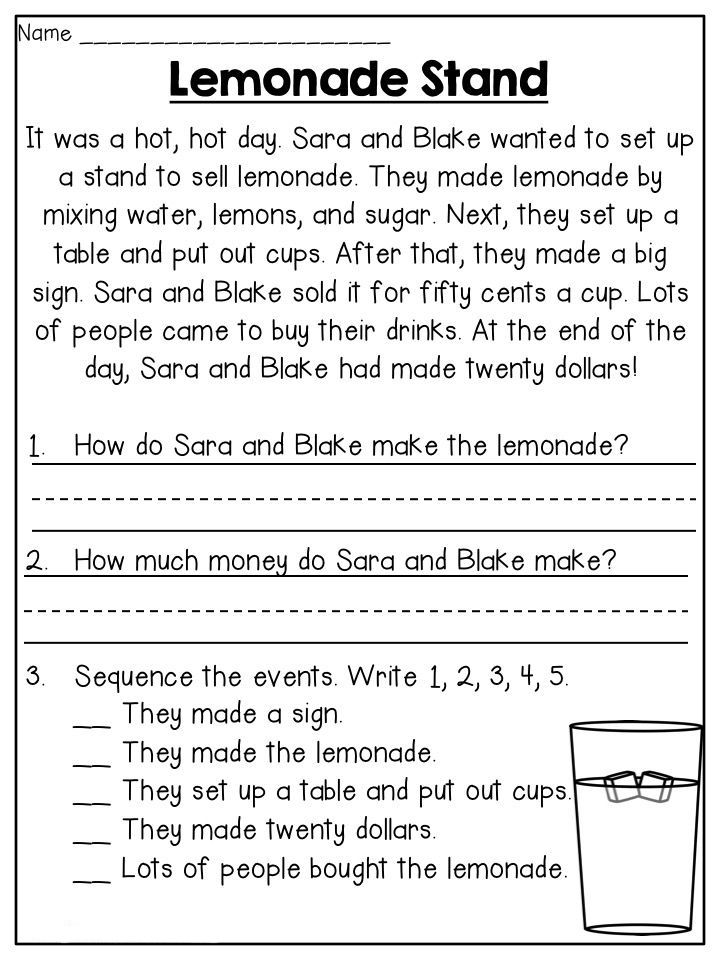 nine0003
nine0003
1st class.
Texts to test reading technique.
I hours.-10-15 words
II hours-15-20 words
III h.-20-25 words
IV.-25-30 words
September.
D. Tikhomirov.
Cat.
Co-ty-ka y-sy.
Pa-pa-la co-ta mouse-ka and pro-pa-la.
(8 words)
L. Tolstoy. nine0003
* * *
Mice lived in a field near a pond.
Spring has come. The mice went up the mountain.
A fox lived on the mountain.
The fox was glad that the mice had come.
(22 words)
L. Tolstoy.
It was winter, but it was warm. There was a lot of snow. The children were at the pond. They took the snow, put the doll. Chilled hands. But the doll came out nicely. There was a tube in the doll's mouth. The doll's eyes were coals. nine0003
(31 words)
Oct.
N. Nosov.
Steps.
Once Petya was returning from kindergarten. That day he learned
That day he learned
to count to ten.
He reached his house, and his younger sister Valya was already waiting at the gate.
- I already know how to count! Petya boasted. - I learned in kindergarten. Look how I now count all the steps on the stairs.
They began to climb the stairs, I Peter counts the steps loudly:
- One, two, three, four, five ...
Words per minute 10-15 words.
L. Tolstoy
Smart Jackdaw.
The jackdaw wanted to drink. There was a jug of water in the yard, and the jug only had water at the bottom. Jackdaw could not be reached. She began to throw pebbles into the jug and put so many that the water became higher and it was possible to drink. nineNovember 0003
(40 words)
L. Tolstoy.
* * *
Aunt gave Varya some honey.
Varya ate little honey herself, but she gave the honey to Misha, Vasya and Katya, and they were happy.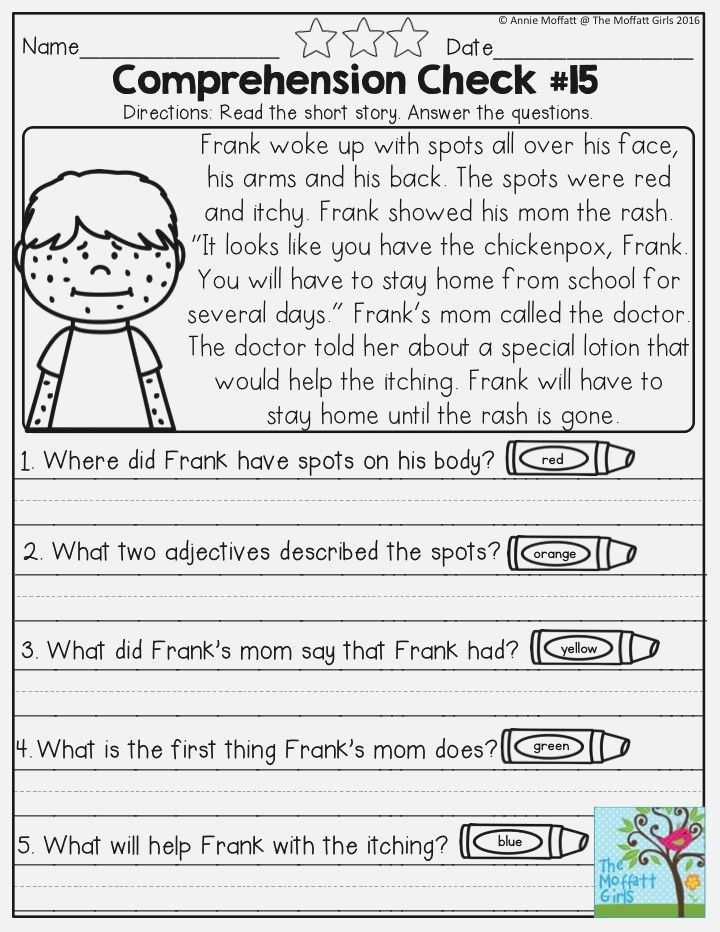
(20 words)
________________________________________________
K. Ushinsky.
Mice.
Old and small mice gathered at their mink. Their eyes are black, their paws are small, they have sharp teeth, gray coats, their ears stick up, their tails drag along the ground. nine0003
…Oh, look out, mice! Your friend Vasya is not far away. He loves you very much, he will kiss you with his paw, he will remember your ponytails, he will tear your fur coats. December
(46 words)
S. Redozubov and others
In winter.
It was winter. It was bitter cold. Lyuba and Lucy ran home. Lyuba sees: children Andryusha and Nyura are in the yard. They made a feeder and hung it on a tree. Andryusha poured grains into the feeder.
Tits and bullfinches have arrived here. Birds peck at grains and crumbs. nine0003
(41 words)
Text to test reading technique
for the second quarter.
L. Tolstoy
Bone.
(True)
My mother bought plums and wanted to give them to the children after dinner. They were still on the plate. Vanya never ate plums and kept sniffing them. And he really liked them. I really wanted to eat. He kept walking past the plums. When no one was in the room, he could not resist, grabbed one plum and ate it. Before dinner, the mother counted the plums and sees that one is missing. She told her father. nine0003
At dinner, the father says: “Well, children, has anyone eaten one plum?” Everyone said, "No." Vanya blushed like a cancer and said too: "No, I didn't eat."
Then the father said: “What one of you has eaten is not good; but that's not the problem. The trouble is that there is a stone in plums, and if someone does not know how to eat them and swallows a stone, he will die in a day. I'm afraid of it."
Vanya turned pale and said: "No, I threw the bone out the window."
And everyone laughed, and Vanya started crying.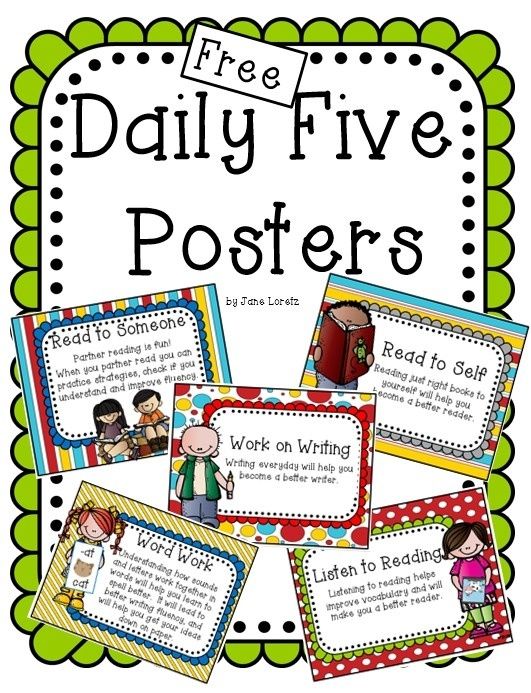 (151 words)
(151 words)
January.
S. Redozubov and others.
Kostya.
Kostya rode in a tram. He sees: an old woman entered the door of the tram. Kostya got up from his seat and said:
- Sit down. I will stand.
- Thank you, dear, - the old woman told him.
(25 words)
___________________________________________________
It's snowing.
And the snow kept coming and going. Snowflakes kept spinning and falling. After dinner, Tanya went out for a walk and did not recognize her village. She became all white - and the roofs are white, and the road is white, and the garden is white, and the meadow is white. nine0003
(37 words)
___________________________________________________
N. Nosov.
Living hat.
The hat was lying on the chest of drawers, the kitten Vaska was sitting on the floor near the chest of drawers, and Vovka and Vadik were sitting at the table and painting pictures.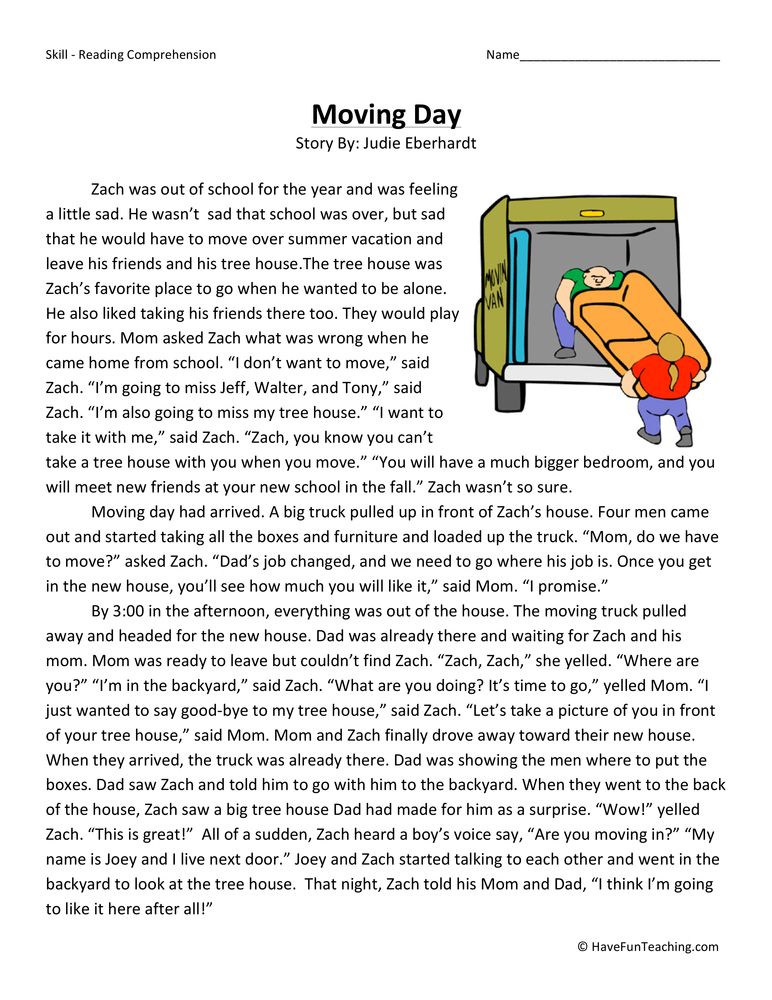 Suddenly, behind them, something fell to the floor. They o-ber-well-lis and saw a hat on the floor near the chest of drawers.
Suddenly, behind them, something fell to the floor. They o-ber-well-lis and saw a hat on the floor near the chest of drawers.
Vadik came closer and started looking at the hat. Suddenly the hat crawled straight towards him. He screams:
- The hat is alive!
(45 words)
February.
S. Redozubov and others
Difficult task.
Svetlana solved the problem, but the problem didn't come out.
- Let me solve the problem for you, - said the brother.
- No, I will decide myself, - Svetlana answered and continued to decide.
- Let me help you, - said my mother.
- No, I can handle it myself!
The girl thought, counted, wrote, and the task came out for her. nine0003
(42 words)
N. Sladkov.
Who is sleeping.
- You, Hare, how do you sleep?
- As expected - lying down.
- How are you, Teterka?
- And I'm sitting.
- And you, Heron?
- And I'm standing.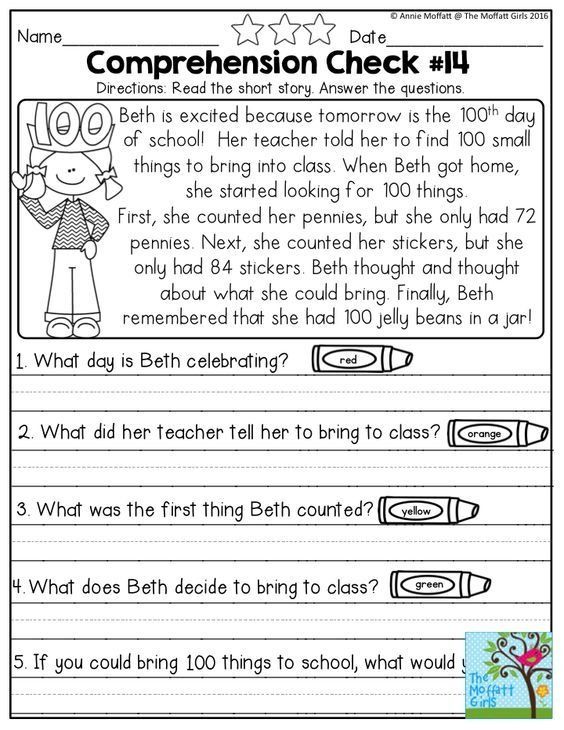
- It turns out, friends, that I, the Bat, sleep better than all of you, I rest more comfortably than anyone!
- And how do you sleep, Bat, do you rest?
- Yes, upside down ...
(44 words)
Mar.
E. Charushin.
Bear and cubs.
Come on, climb on the stump, pick the berries! Don't fall, don't get hurt!
Though we, bears, are clubfoot, but dodgers. We know how to run like that - we will catch up with the horse.
We climb trees, dive into the water.
We turn out heavy stumps, looking for fat beetles.
We eat honey and grass, roots and berries.
And the larva will get in - and they are welcome.
(49words)
________________________________________________
Text to test reading technique
for the third quarter.
Number of words per minute 20-25
L. Tolstoy.
Wolf and squirrel.
The squirrel jumped from branch to branch and fell right on the sleepy wolf.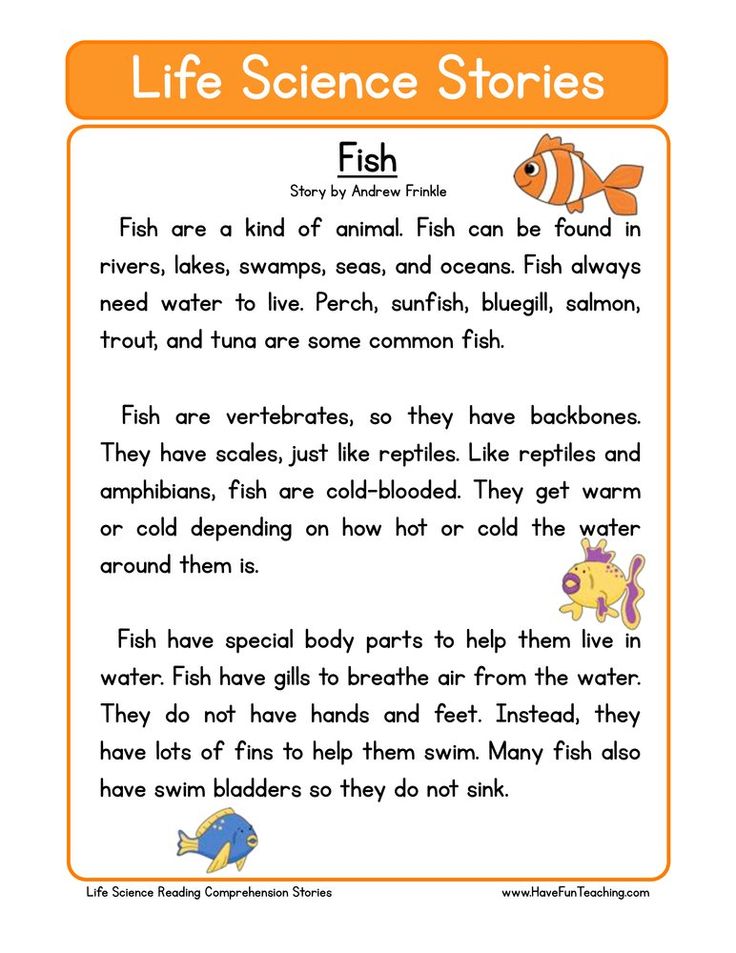 The wolf jumped up and wanted to eat her.
The wolf jumped up and wanted to eat her.
The squirrel began to ask: "Let me go." The wolf said: “Okay, I'll let you in, just tell me why you squirrels are so cheerful. I’m always bored, but you look at you, you’re all playing and jumping up there.” The squirrel said: "Let me go up the tree first, I'll tell you from there, otherwise I'm afraid of you." The wolf let go, and the squirrel went to the tree and said from there: “You are bored because you are angry. Anger burns your heart. And we are cheerful because we are kind and do no harm to anyone. nine0003
(100 words)
April.
L. Tolstoy.
* * *
Two men were driving, one into the city and the other out of the city. They hit each other with sleds. One shouts: “Give me the way, I need to go to the city!” And the other shouts: “Give me the way, I need to go home as soon as possible!” They screamed for a long time. The third man saw and said: "Whoever needs it as soon as possible, besiege him back.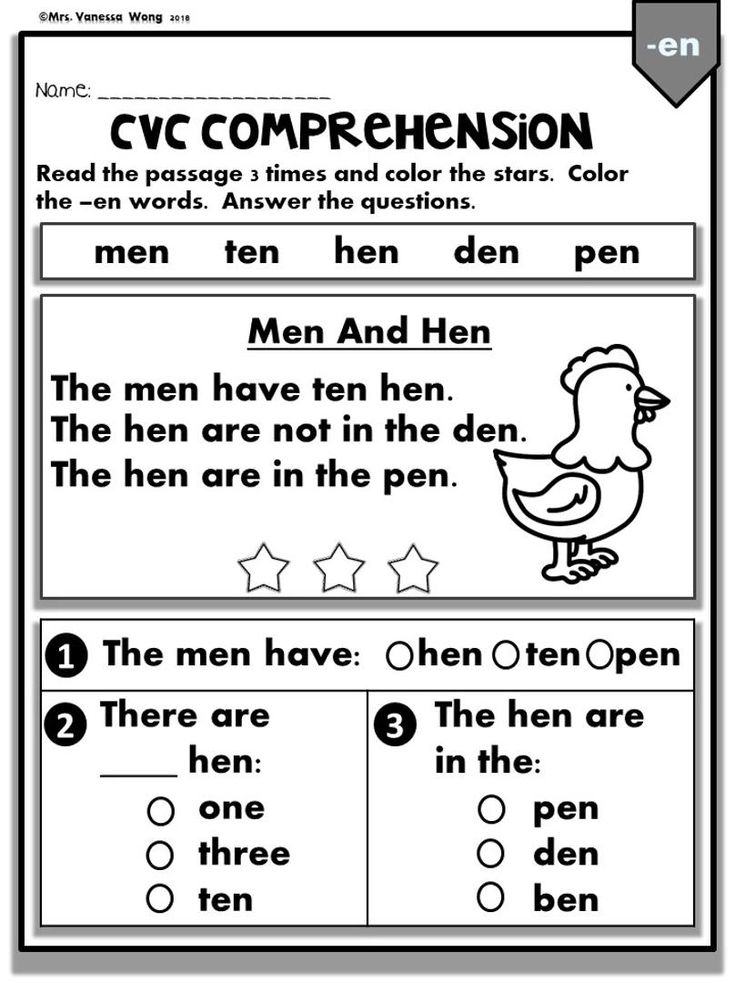 "
"
(49 words)
L. Tolstoy.
* * *
Sheep walked under the forest, two lambs left the flock. The old sheep said: "Don't be naughty, lambs, not long before trouble." And the wolf stood behind a bush and said: “It’s not true, the lambs, the sheep is old, her legs can’t walk, she’s so envious. Run alone all over the field." The lambs did just that: they moved away from the herd, and the wolf caught them and ate them.
(55 words).
for the fourth quarter.
Number of words per minute 25-30
L. Tolstoy
Kitten.
There was a brother and sister - Vasya and Katya; and they had a cat. In the spring, the cat disappeared. The children looked for her everywhere, but could not find her. Once they were playing near the barn and heard something meowing in thin voices above their heads. Vasya climbed the stairs under the roof of the barn. And Katya stood below and kept asking: “Did you find it? Found?" But Vasya did not answer her.